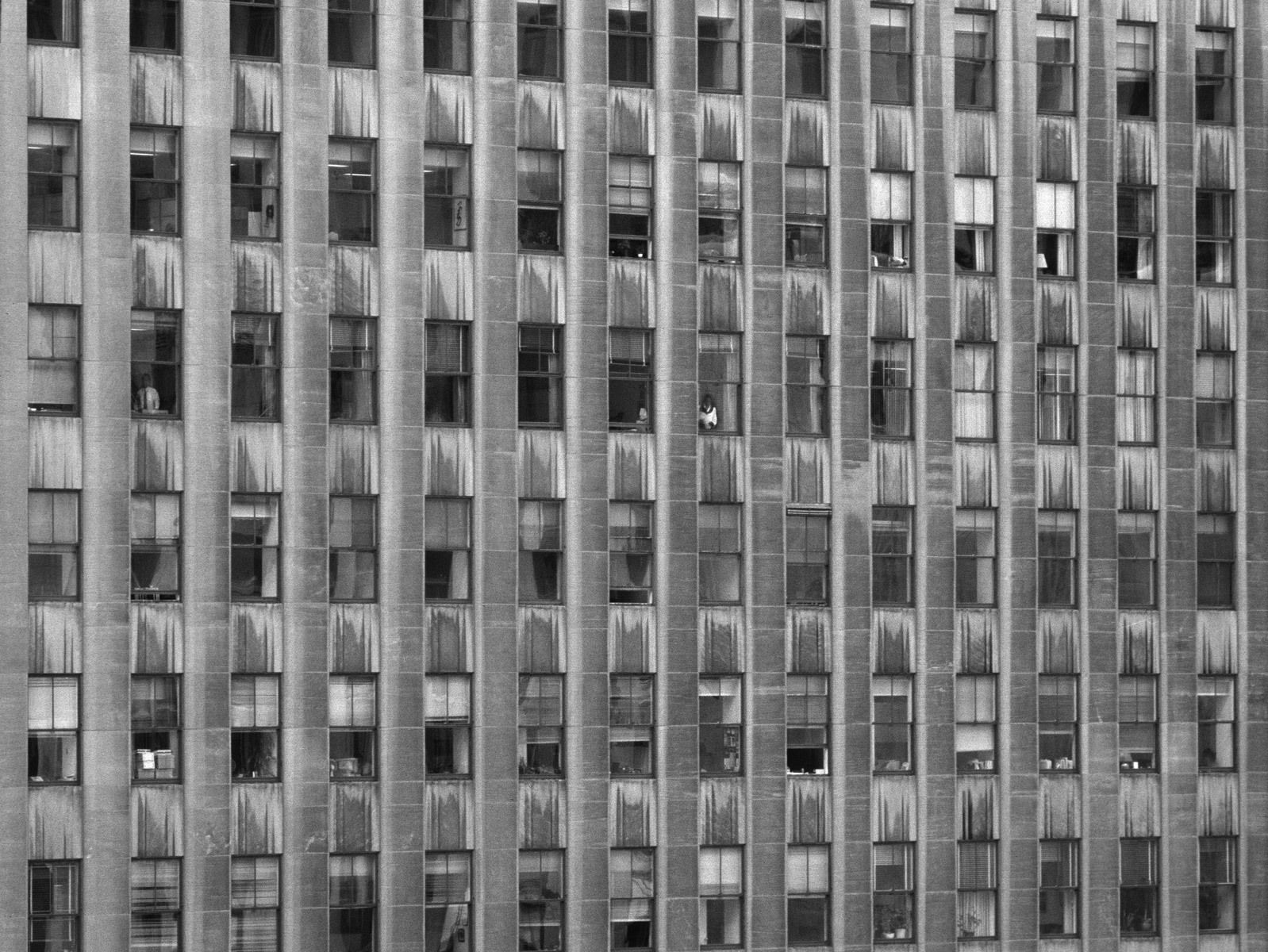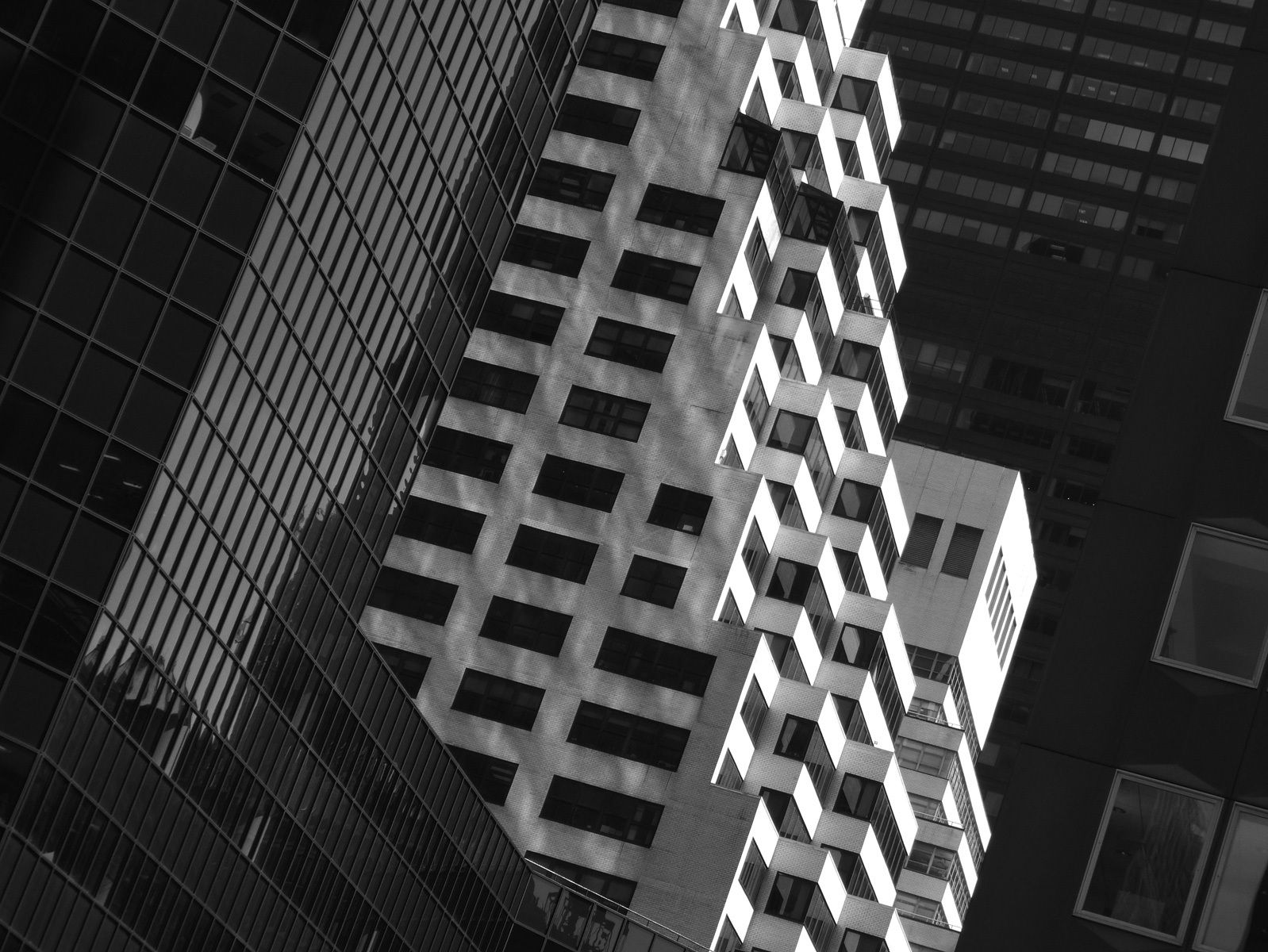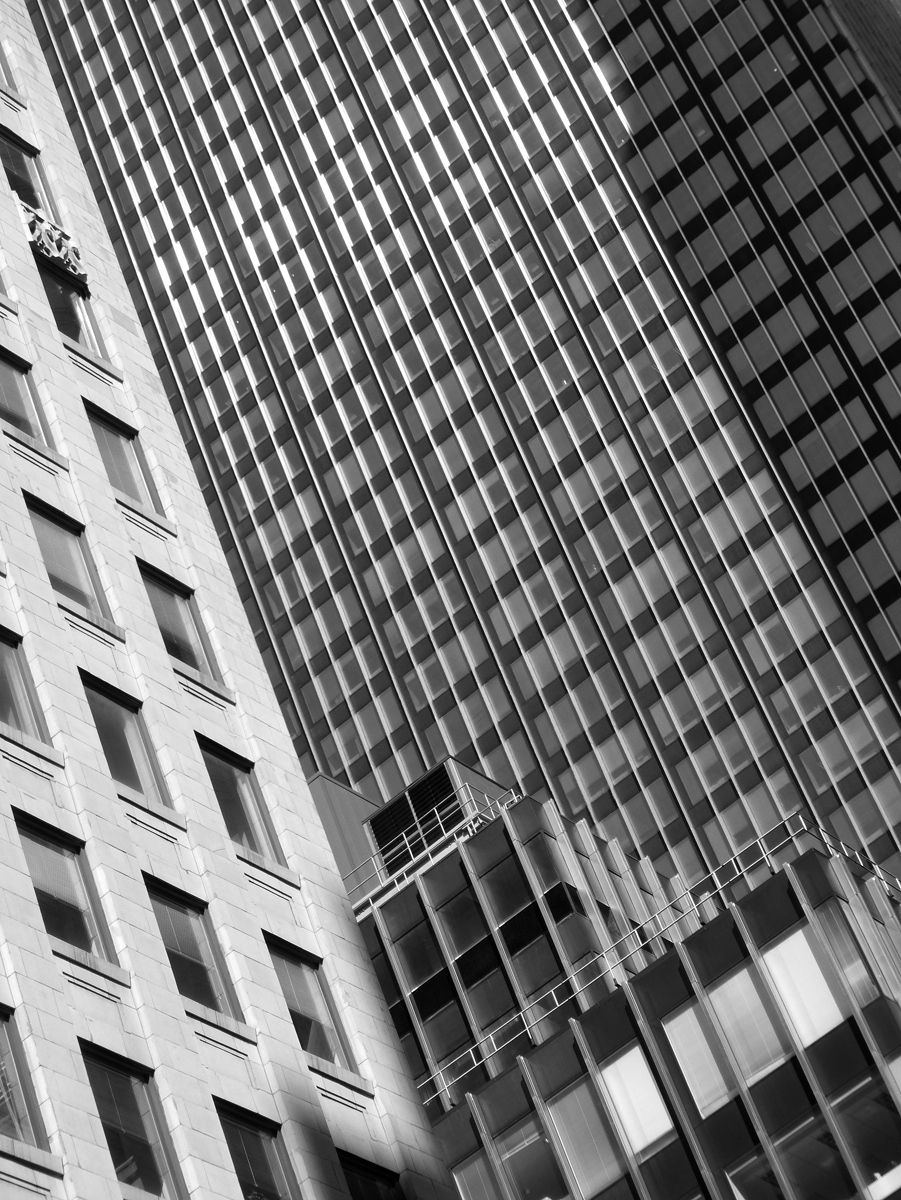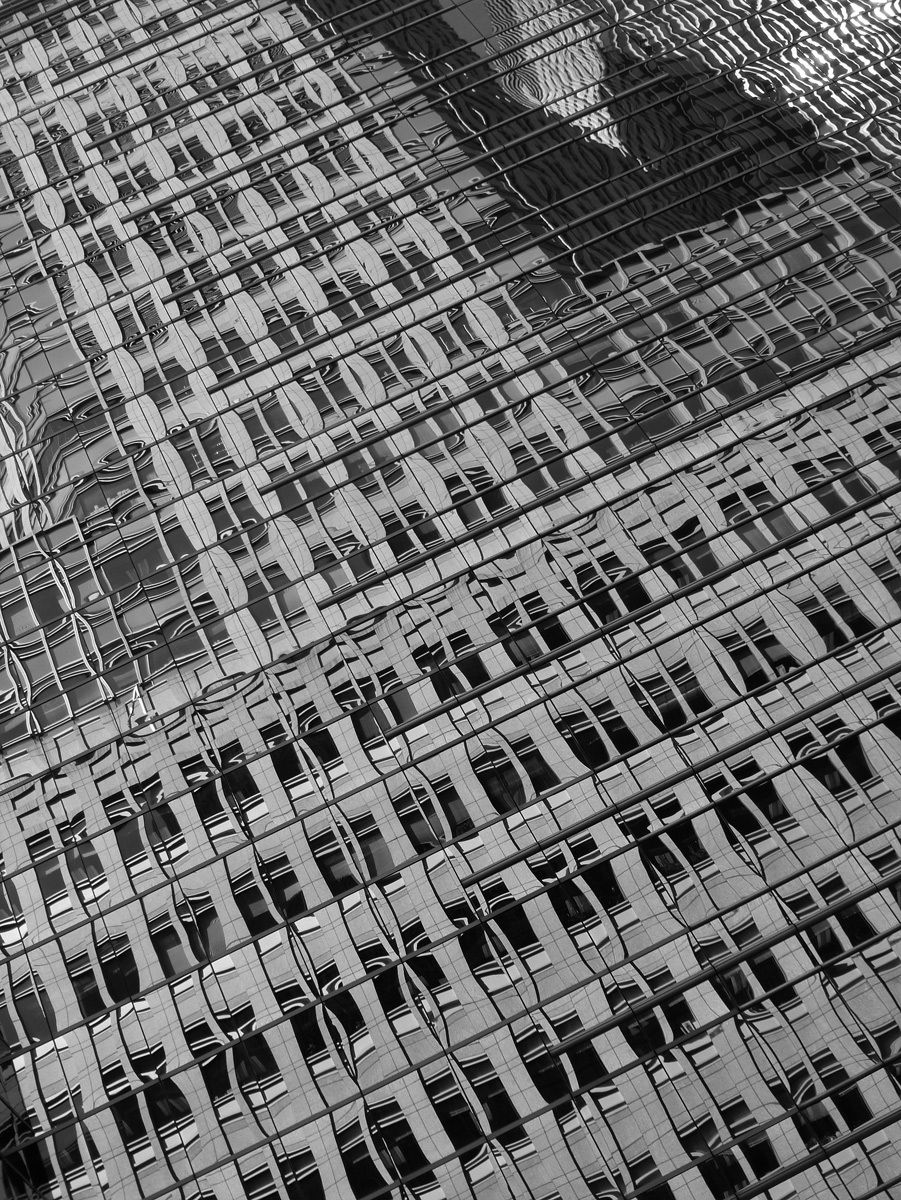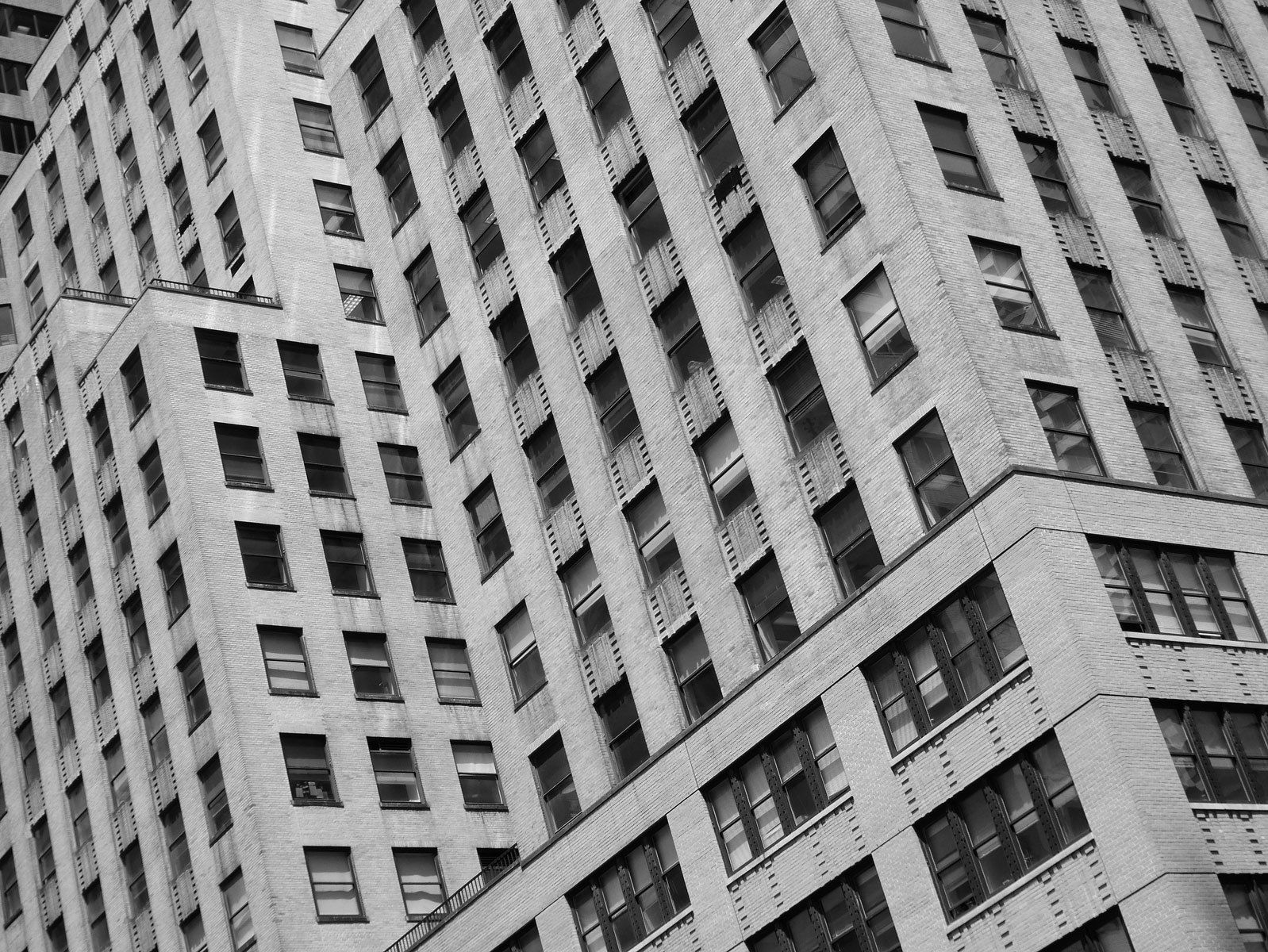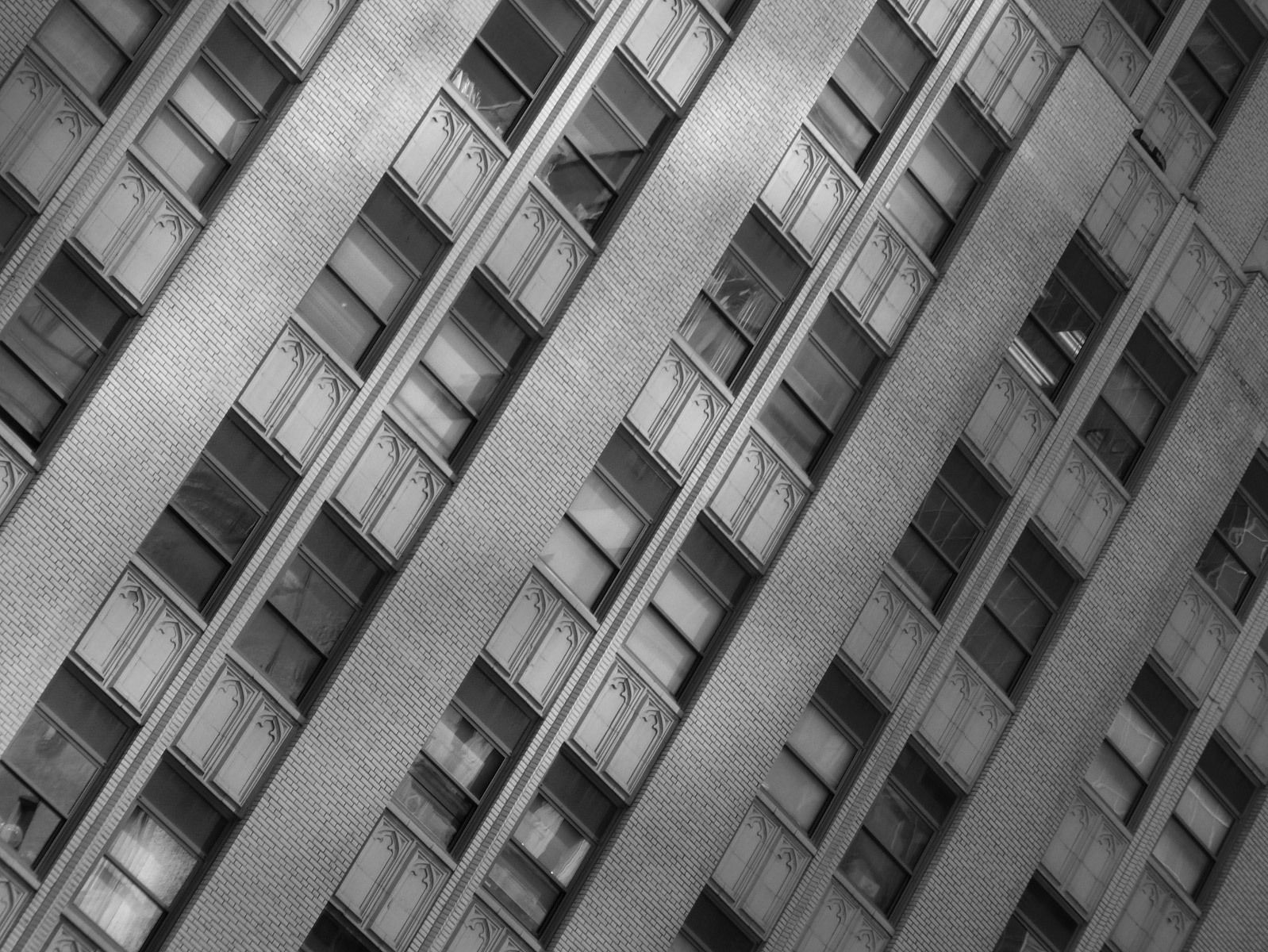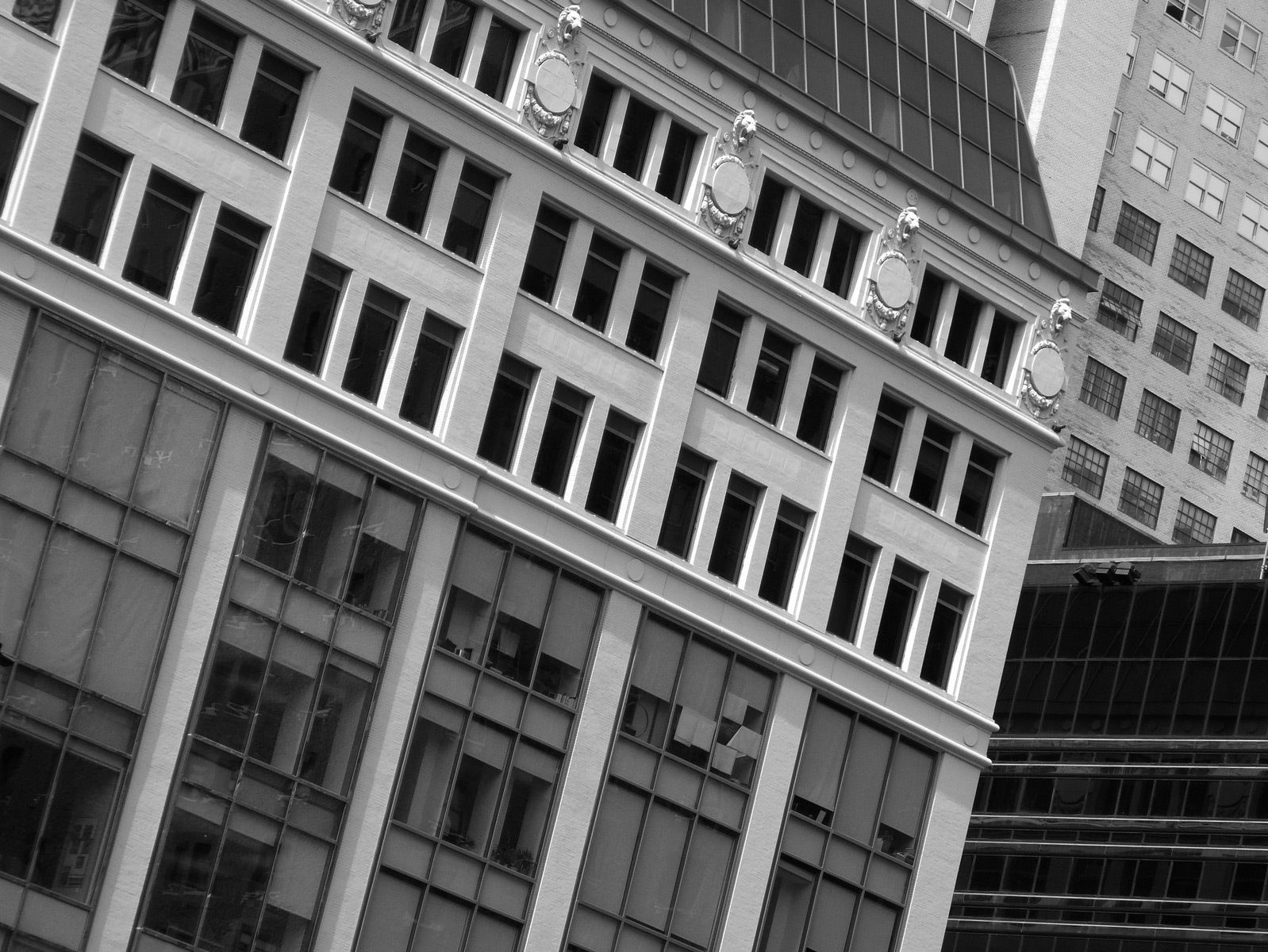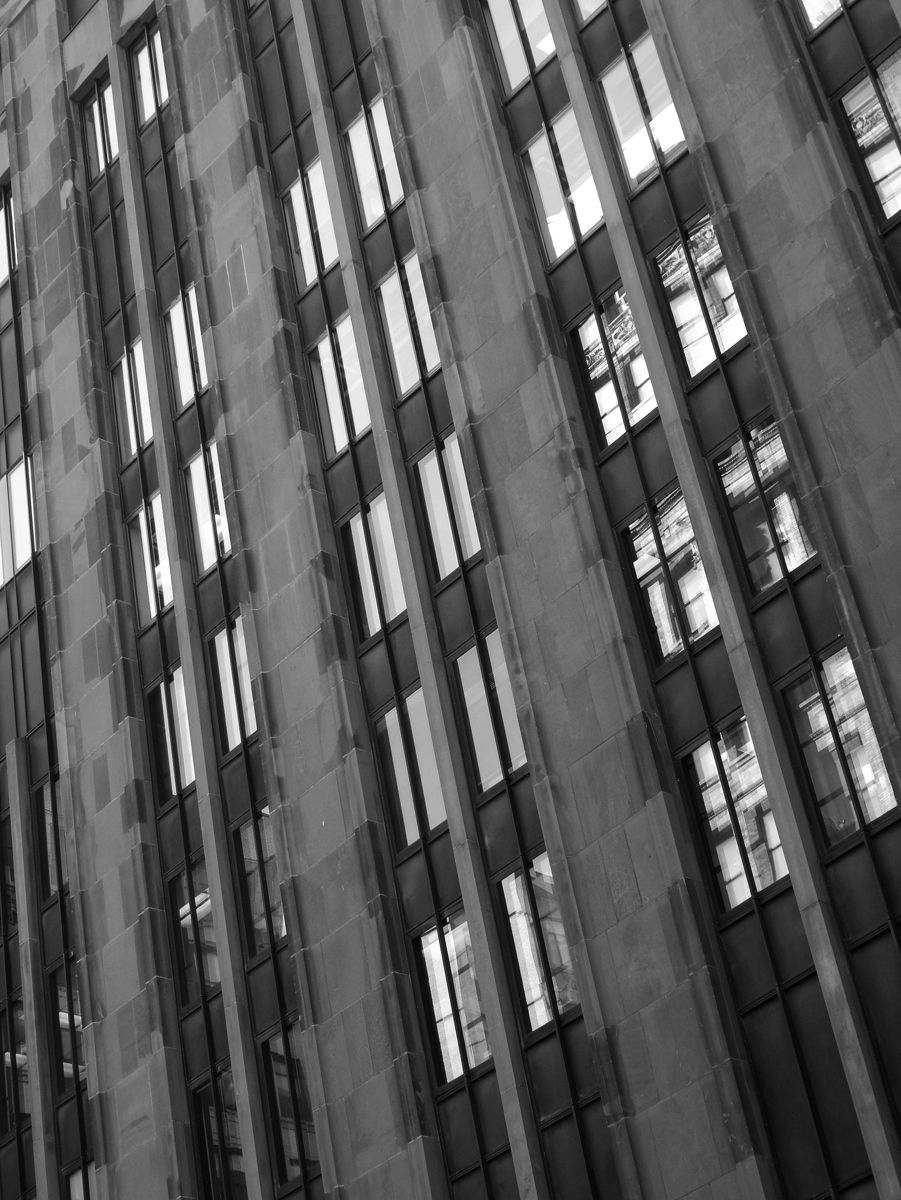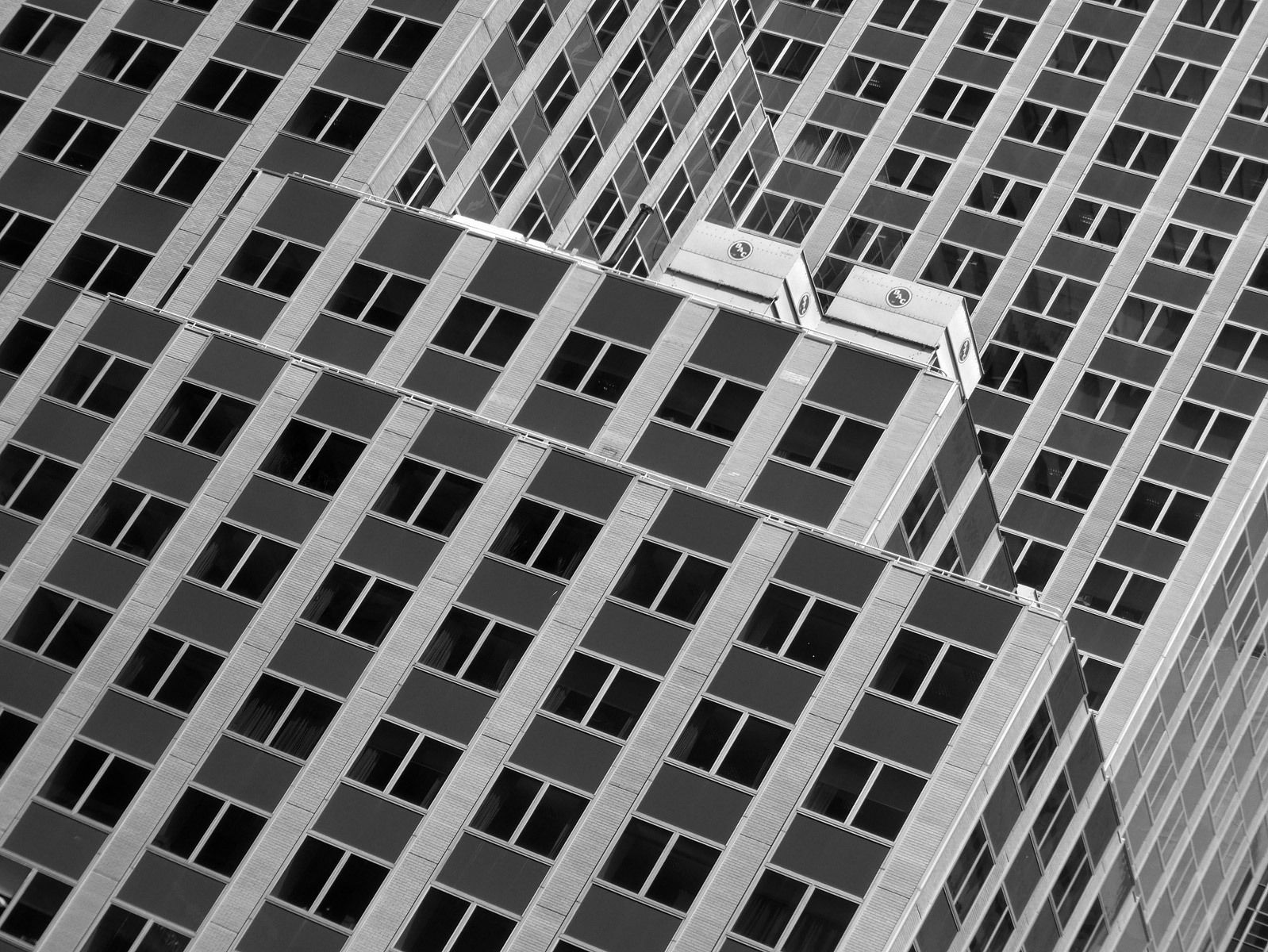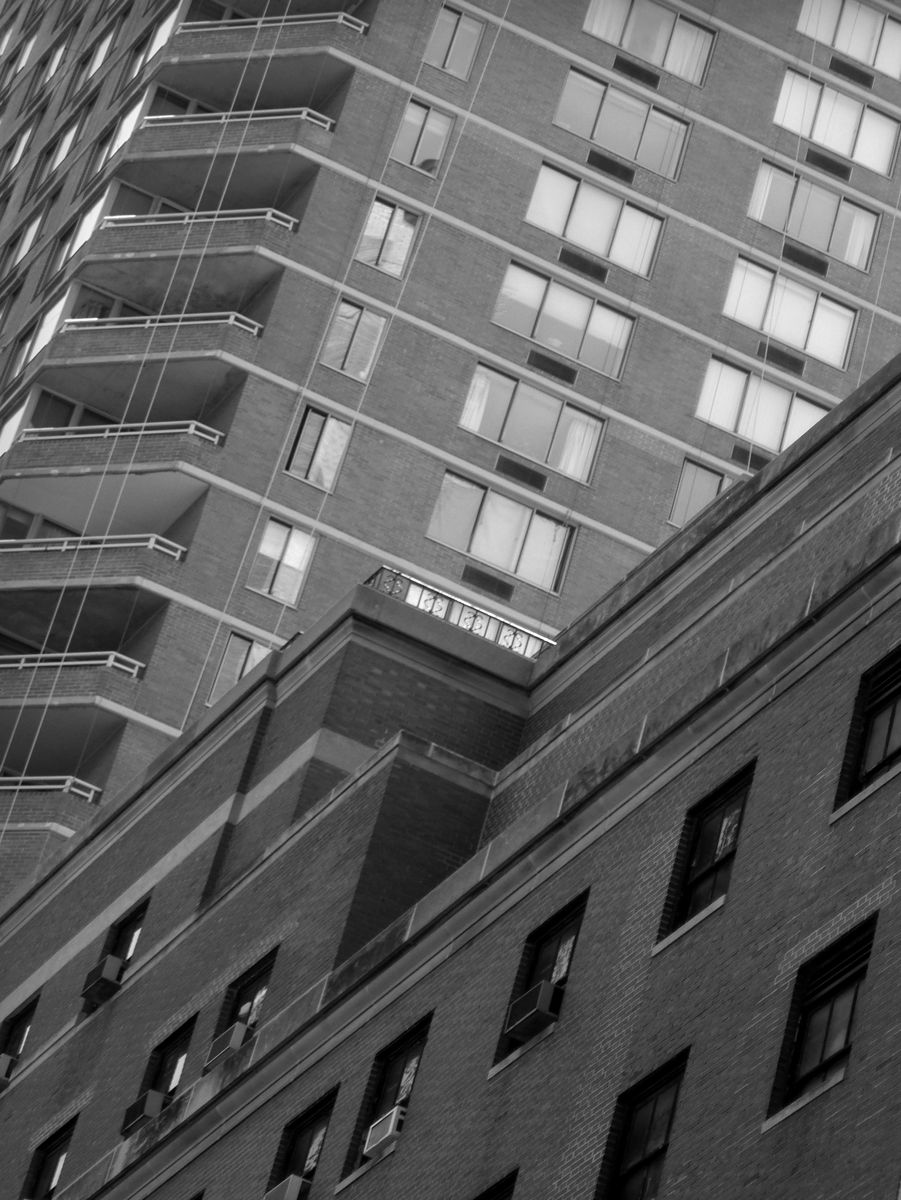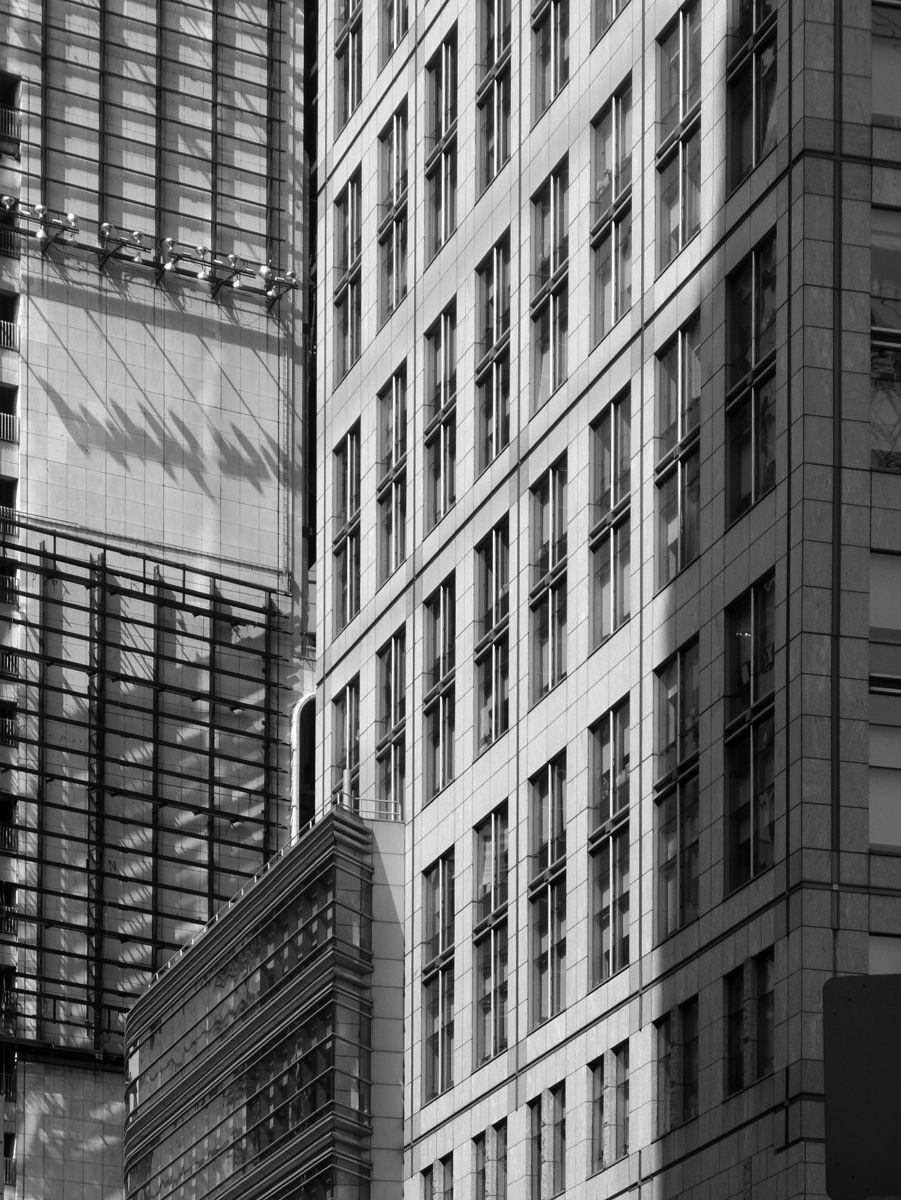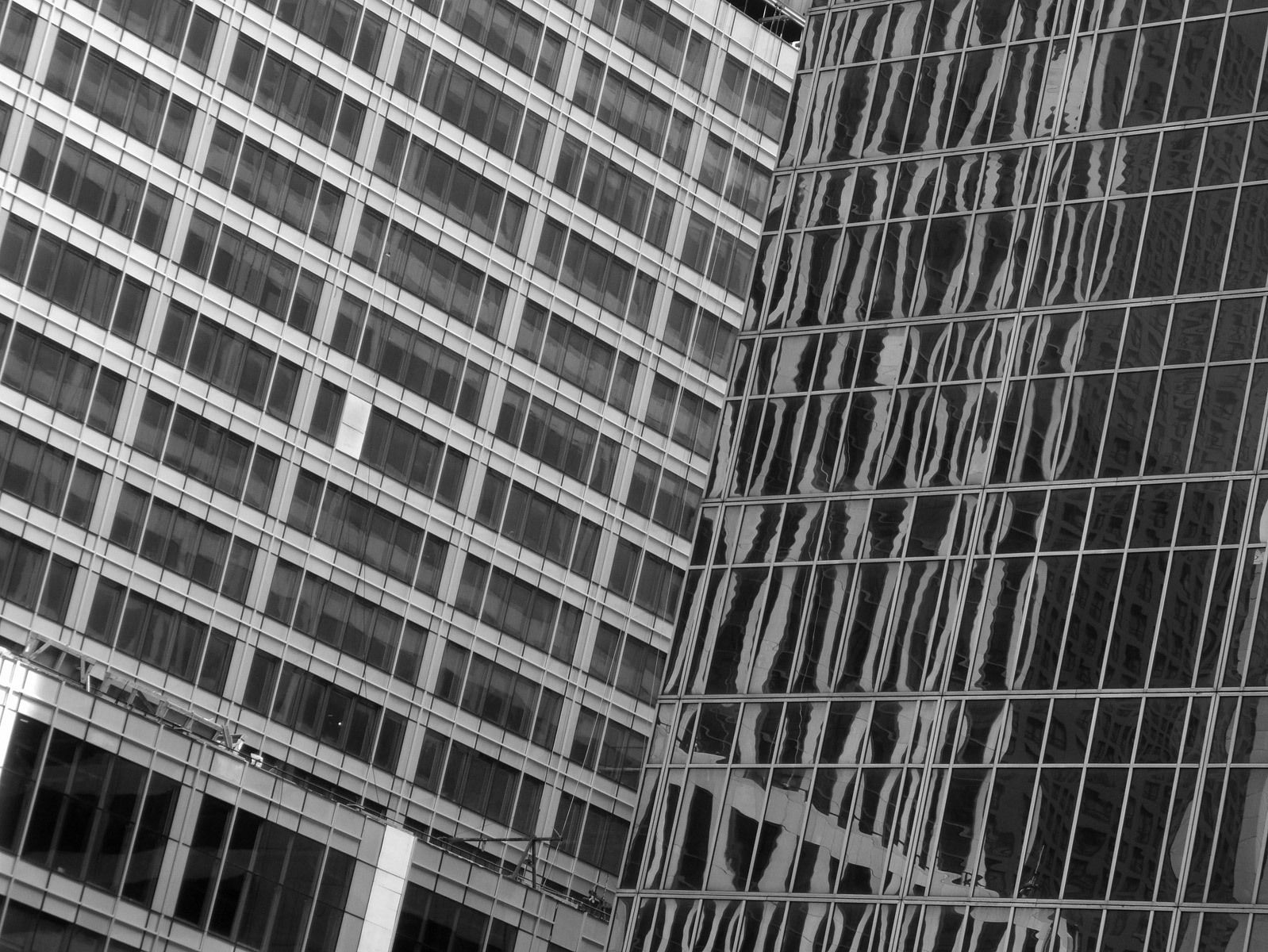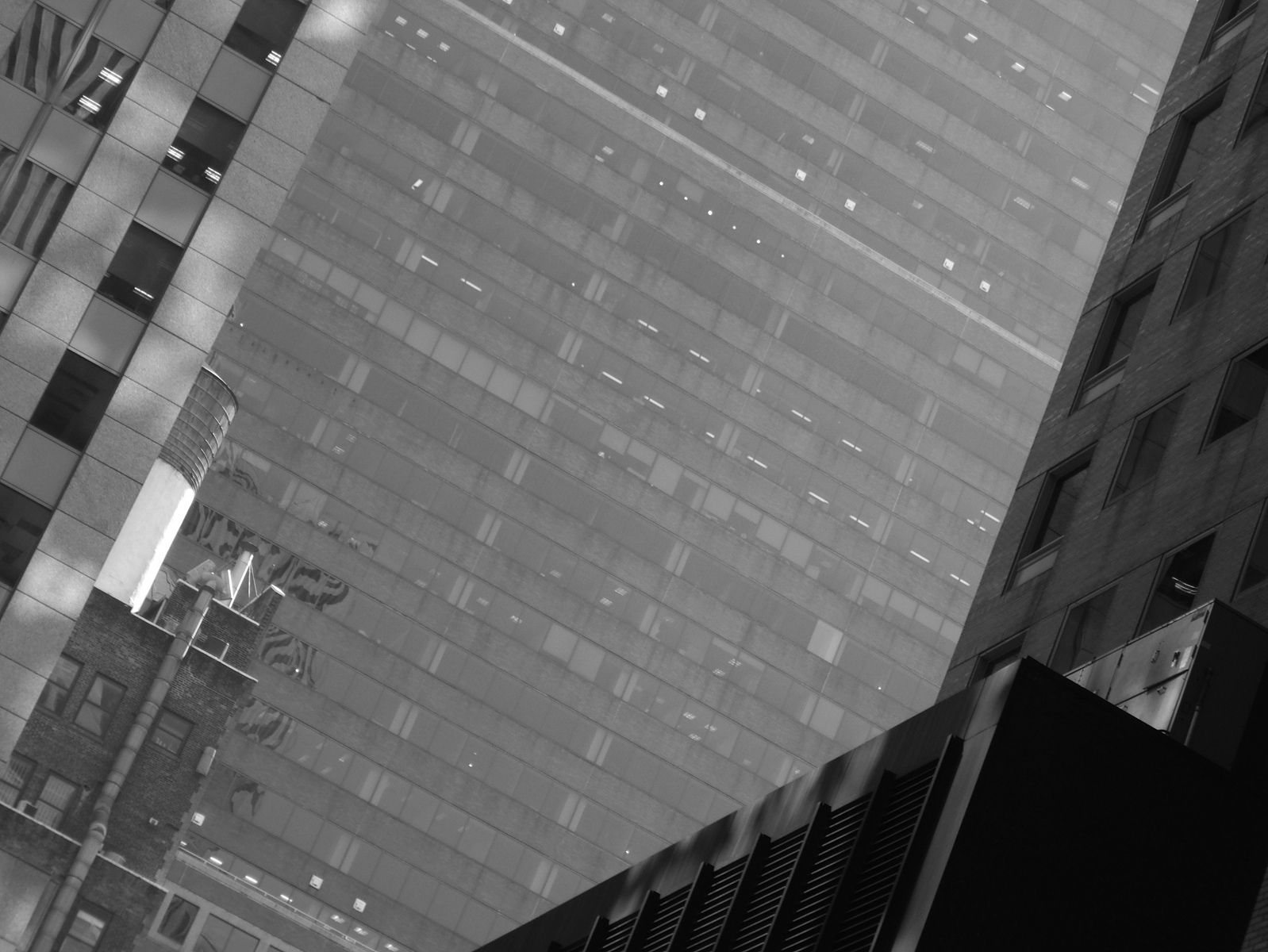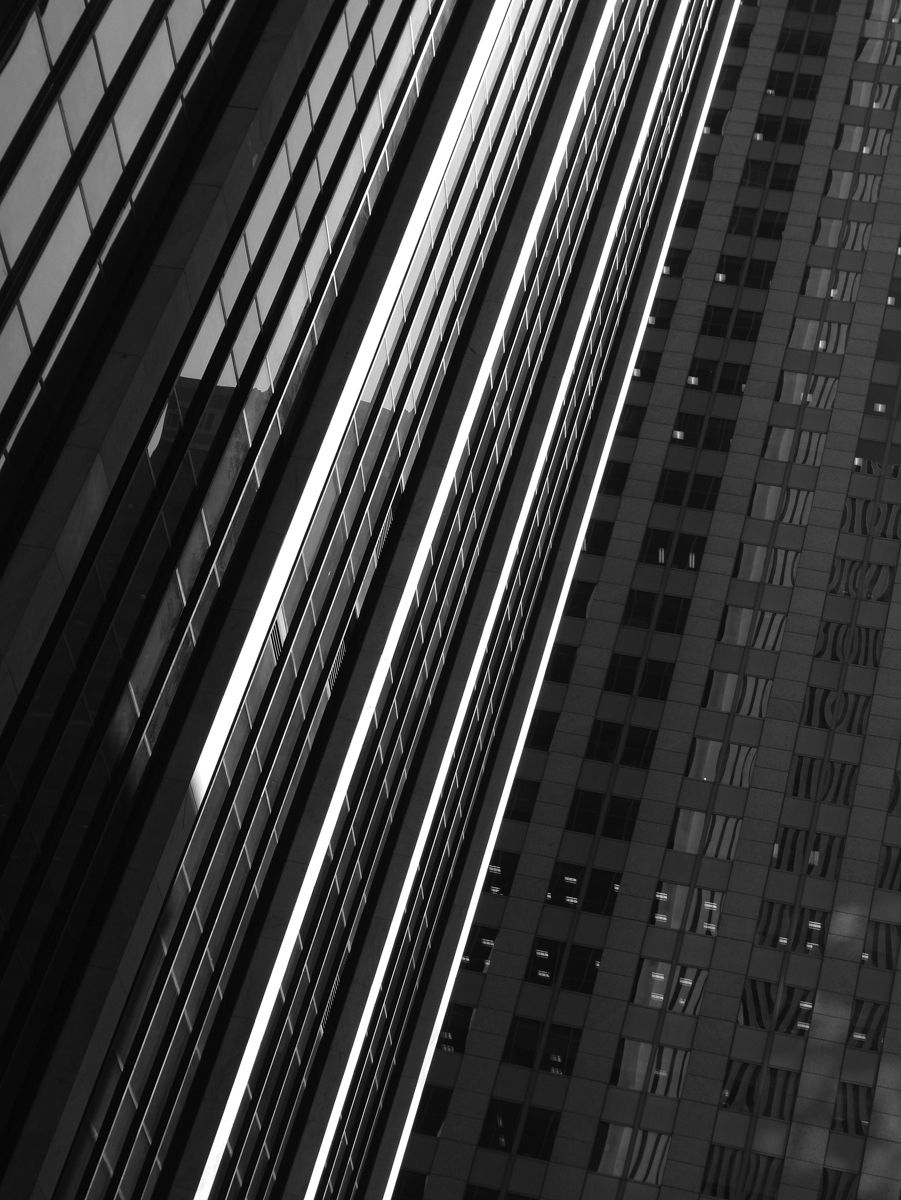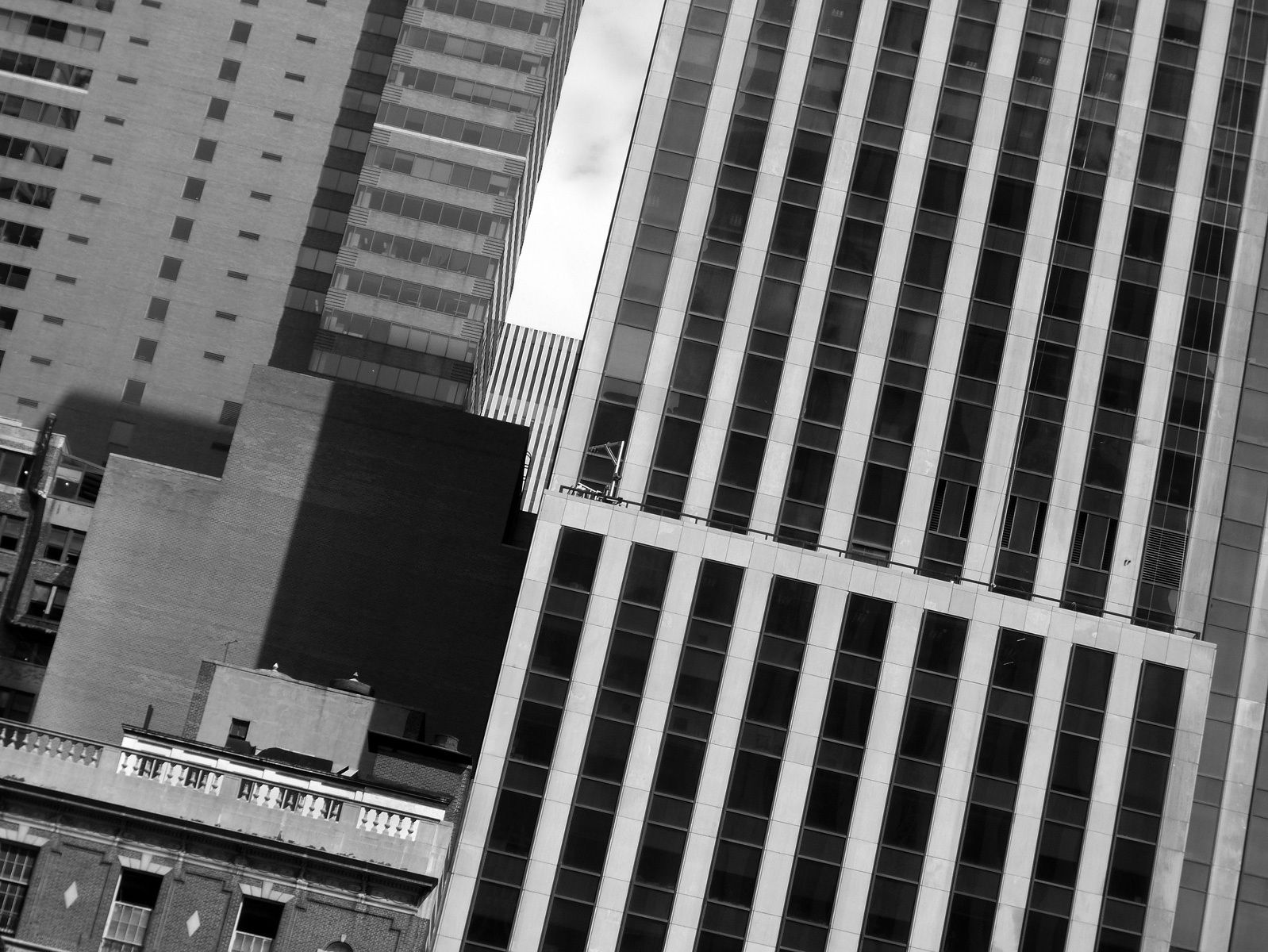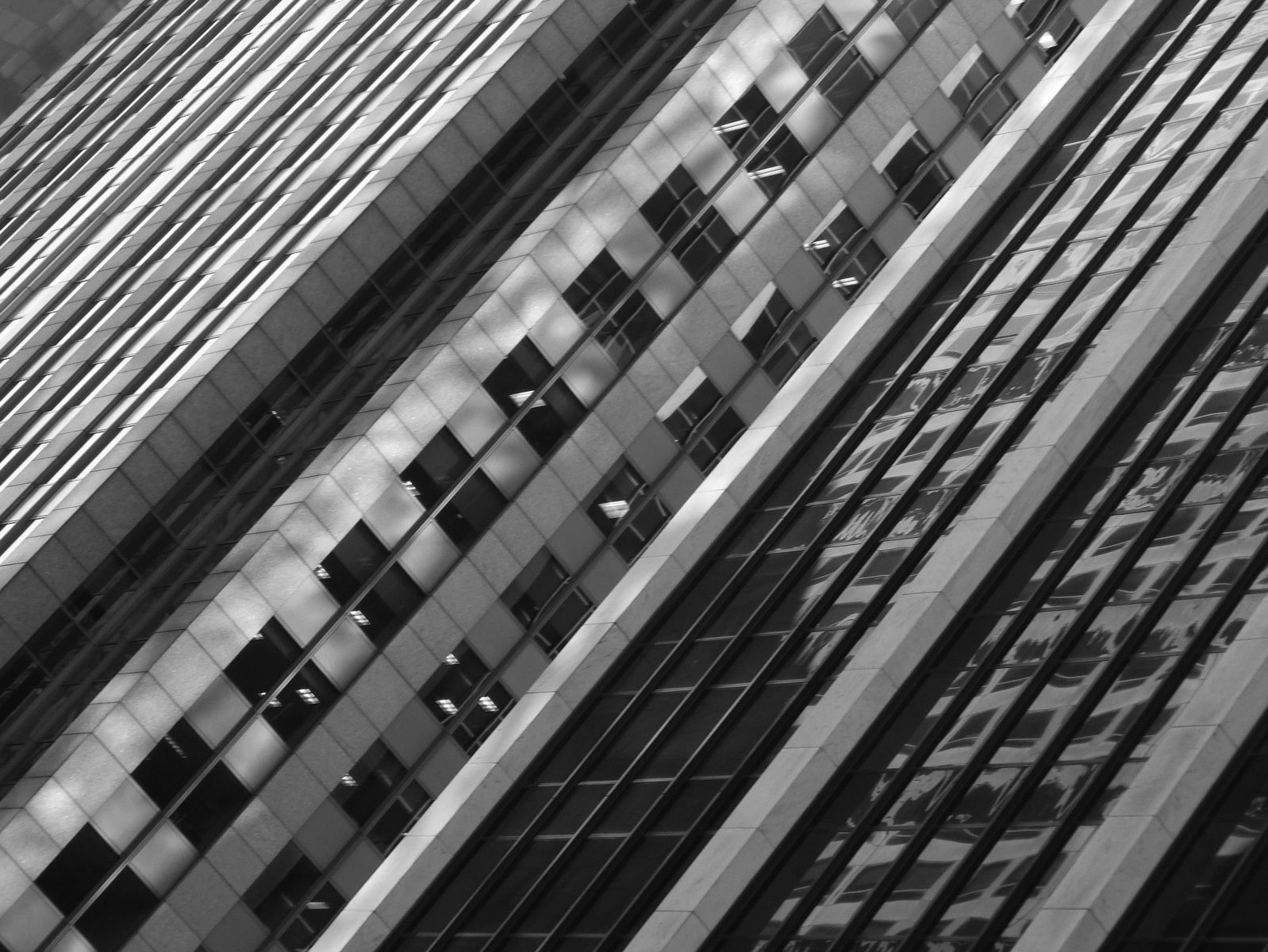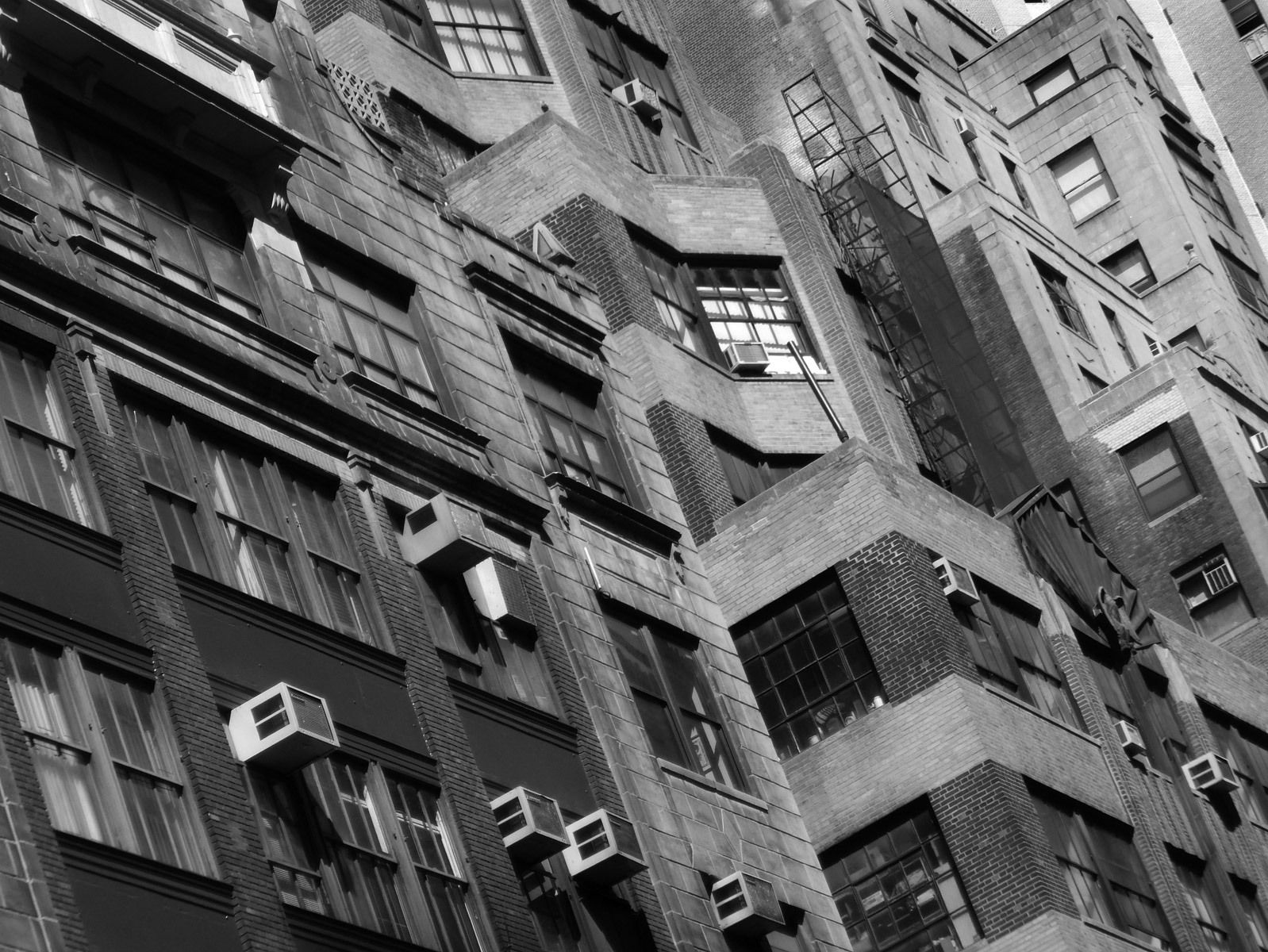Where We Live: North
Originally exhibited in 2006 at the Rosenberg Gallery, NYC.
Whether you are walking the streets of New York City or the dirt roads of a barrio in Mexico, you are surrounded by the man-made structures of these societies’ and their cultures. It is through these structures that man represents himself, be it a conscious or unconscious effort. Social and economic orders are both sheltered within their walls.
The economic affluence of the New York “metropolitan canyons” (North) is represented by modern glass and steel buildings, juxtaposed with the impoverished barrios of Latin America (South/Sur). Constructed with mud, dirt and whatever materials are available, these barrios demonstrate the similarities, as well as the differences, of how people live in a densely populated urban environment. In both, the available land and space are at a premium.
Don Penny’s steel-strong images of New York’s manmade “canyons” communicate the modern and affluent hand of man on the most expensive and desirable real estate in the world. Bold angles and forced perspective, always looking up, combine with the repetitive nature of the cityscape’s clean lines, while the use of modern and sophisticated materials provide a crazy quilt of light and shadow.
Pablo Lopez’s insightful and unusual landscapes of the barrios of Mexico City in the “South/Sur” are a sharp contrast to the modern skyscrapers of the “North.” These barrios show how the influences of poverty, non-existent building codes, and the necessity of placing a home wherever possible, can lead to gross over development and population density in some of the most undesirable and difficult locations, such as the “barrancas.”
